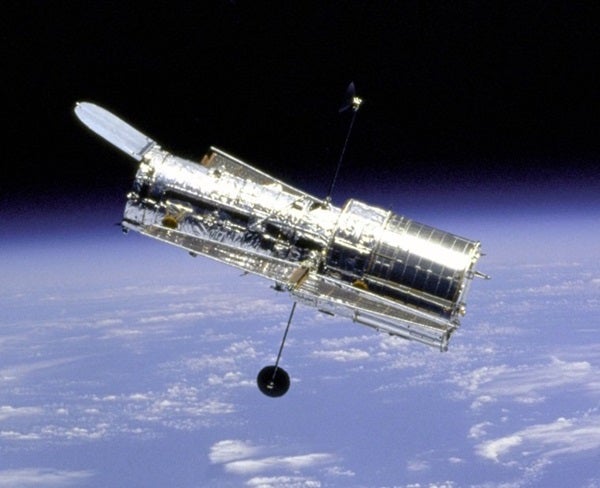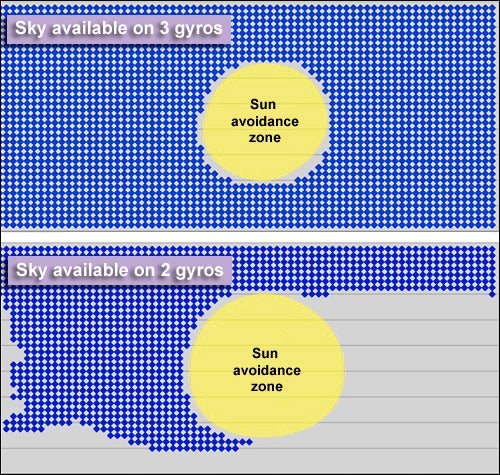In a move expected to give the Hubble Space Telescope at least 8 additional months of science observations, scientists have idled one of its three operating gyroscopes. While three gyros are needed to point the telescope and hold it on target, engineers and astronomers worked out a scheme in which Hubble can perform its scientific tasks almost as well with just two functioning gyros.
Hubble carries six gyroscopes, but two have stopped working already. Anticipating future failures, scientists developed the two-gyro plan, but they agreed to put the telescope into the new mode now to avoid scheduling delays when worn-out gyros fail.
Spin down
Gyro 4, which has been spinning for 5.9 years, is has been running the longest. On August 28, engineers removed it from the telescope’s pointing-control loop. This placed Hubble into two-gyro mode, but engineers kept gyro 4 powered up in case unexpected problems arose. On September 1, gyro 4 was turned off to preserve it as a spare.
Gyros, the heart of Hubble’s pointing control system, sense the telescope’s motion in each of three dimensions. They also provide Hubble with information about its location in space so it can slew across the sky from one target to another.
Some of this information is missing when running with only two gyros. For slewing, Hubble will use either its onboard magnetometers, which sense the telescope’s position relative to Earth’s magnetic field, or its Fixed Head Star Trackers (FHST). While the FHSTs provide more accurate information than the magnetometers, there are times when Earth blocks star fields they might need. The magnetometers work all the time but result in pointing errors as great as 10º.
Once the FHSTs can see stars, Hubble’s computer compares their images to its star map and corrects where it’s pointing. Then, the telescope’s Fine Guidance Sensors (FGS) acquire the guide stars needed to center the target in the instrument’s field-of-view. Once that happens, FGS information replaces that from the FHSTs, enabling Hubble to study its target.
Astronomers say a downside of the change is more complex scheduling. To protect the telescope, Hubble cannot point within 50º of the Sun, but the large potential pointing errors require a bigger Sun-avoidance zone. Also, a large fraction of the sky is unobservable at any given time, although, over the course of a year, Hubble can point to any target.
Service, please
Even with this change, experts think Hubble will lose its ability to do science by mid-2008.
NASA Administrator Michael Griffin has agreed to consider a Hubble servicing mission following a second successful shuttle test flight, which now is not expected before March. A servicing mission would include installation of new gyros and batteries to give the observatory several more years of operation, as well as new science instruments that would extend Hubble’s capabilities.
NASA’s cost in deferring this decision is now about $10 million a month. This is because the agency must remain prepared to execute the mission, which means keeping personnel trained and equipment up to date. “Activities include the development of hardware and software for the flight system, the various ground systems required to support that equipment, the training of the astronauts and the support teams for the mission, and the development of the very detailed … contingency activities required in the event of unexpected situations on-orbit,” says Michael Moore, program executive for the Hubble Space Telescope in NASA’s Science Mission Directorate.
This constant level of funding is “a bit of a kabuki dance,” he says, but it helps structure manpower and other resources for servicing missions. “The current budget plan assumes that NASA will be able to execute a servicing mission in 2007,” Moore notes. “If the mission moves to a significantly later date, NASA will need to adjust this budget plan to continue to support planning of a servicing mission.”











